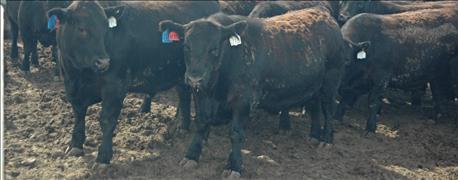August 8, 2016

With beef cow numbers up and cattle on feed inventory surpassing year ago levels for most months since late 2014, cattle slaughter has been growing and is expected to continue to rise for the foreseeable future. But the other determining factor in beef production levels--cattle slaughter weights--have recently fallen below year ago levels for the first time since 2011. With domestic markets expecting more beef and total meat production for the next few years, cattle slaughter weights will play an important role in how burdensome supplies become and therefore how prices for cattle and other livestock products respond.

HEAVYWEIGHTS: Larger cattle can create price issues in the beef market.
The number of cattle coming to market is largely determined by beef and dairy cows a couple of years earlier. Though some variations occur due to import levels, calving ratios and other factors, slaughter numbers are for the most part decided long before the animals go to market. Slaughter weights, however, can vary widely in the short term. The length of time an animal is kept on feed before being marketed, the feed ration provided, weather factors and other short term variables factor into the amount of beef per animal.
Weight impacts price
Figure 1 denotes the relationship in recent years between changes in cattle slaughter levels, slaughter weights, and beef production. While changes in beef production track most closely to changes in slaughter numbers, weight variations can move beef tonnage a couple of percent above or below the amount implied by animal numbers. And those variations due to weights often make a significant impact on cattle prices.

Although weights have been up about one percent for the first five months of 2016, May 2016 posted the first year ago decline in weights since December 2011. Figure 2 shows the change in federally inspected dressed cattle weights against the previous year for every month since 2010. Going from an additional 20 pounds of weight per animal, which was the case for the majority of months from September 2014 to November 2015, to a decline has been a major factor in keeping cattle prices from becoming weaker than they already are.
Feedlot decisions
Cattle feeders are similar to any other business in that they seek to maximize profitability. Though the number of animals available to keep or place into their yards is somewhat fixed in the short term, many of their decisions affect the weight at which cattle are marketed. Though it is often tempting in times of falling cattle prices and relatively affordable feed to continue to feed cattle longer in hopes that prices will improve, history is full of examples when large numbers of heavy cattle created an oversupply of beef, and prices suffered.

Keeping current in feedlot marketings is not always the best decision for every feedlot operator. However, with solid growth in cattle slaughter numbers expected to continue for the next few years, it will be crucial for prices that the industry does not allow beef supply growth to get out of hand by allowing large gains in slaughter weights to flood markets with too much beef.
Brown is a livestock economist with the University of Missouri. He grew up on a diversified farm in northwest Missouri.
You May Also Like




